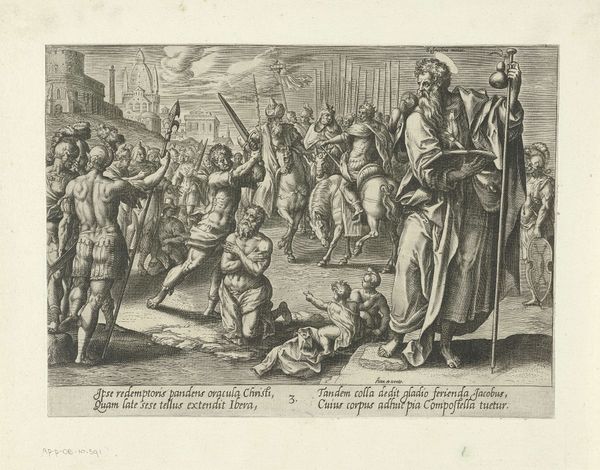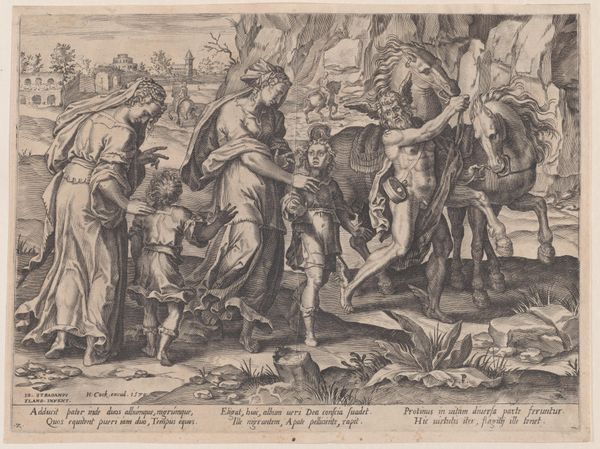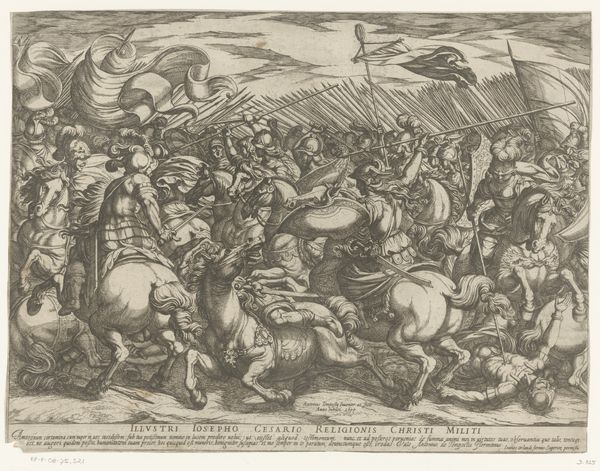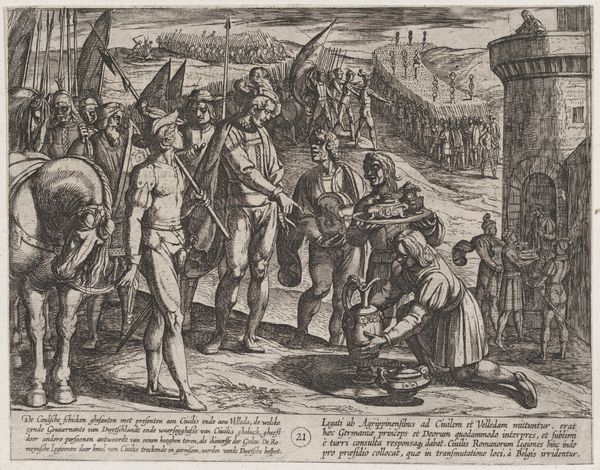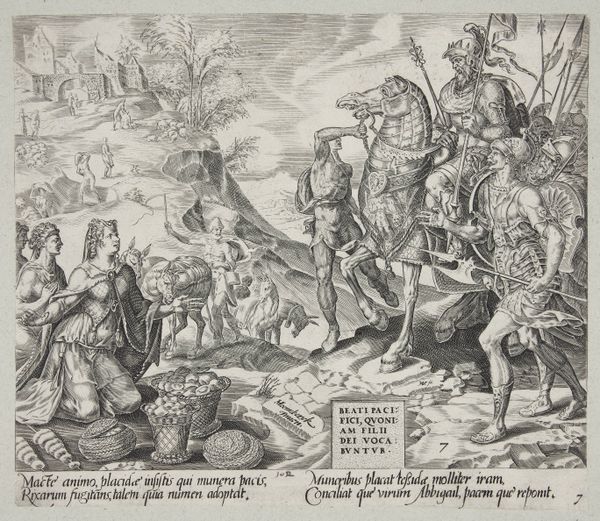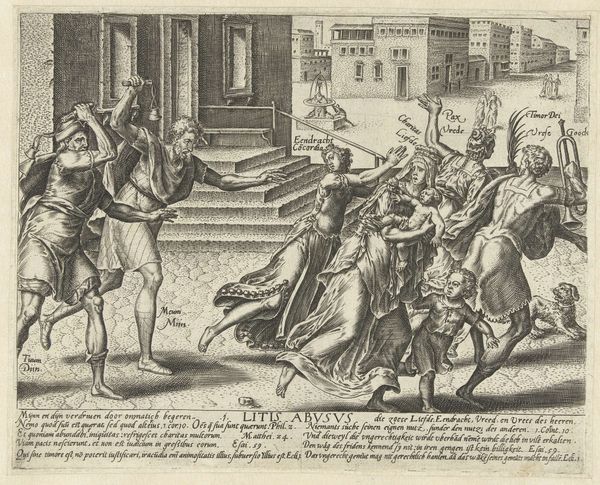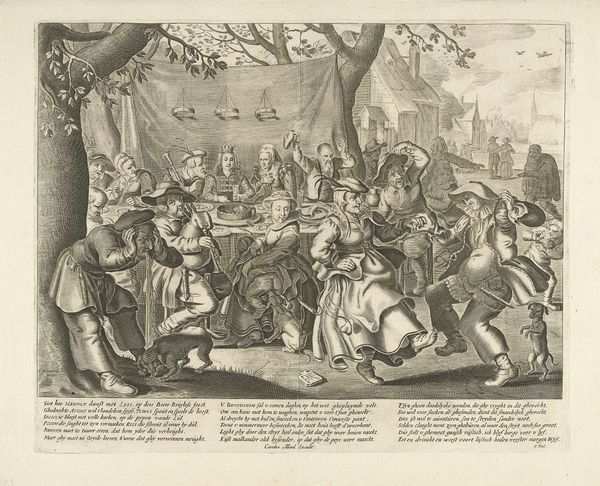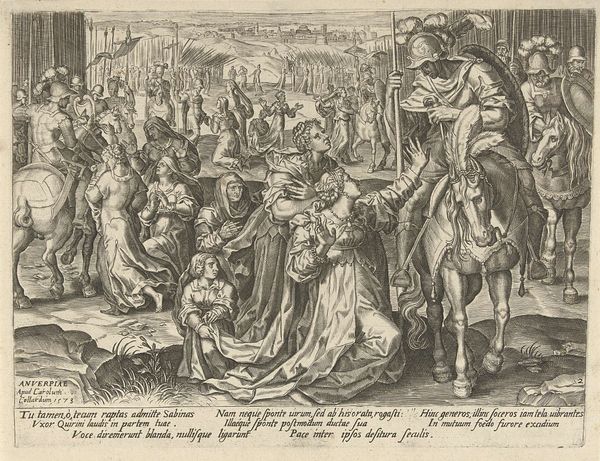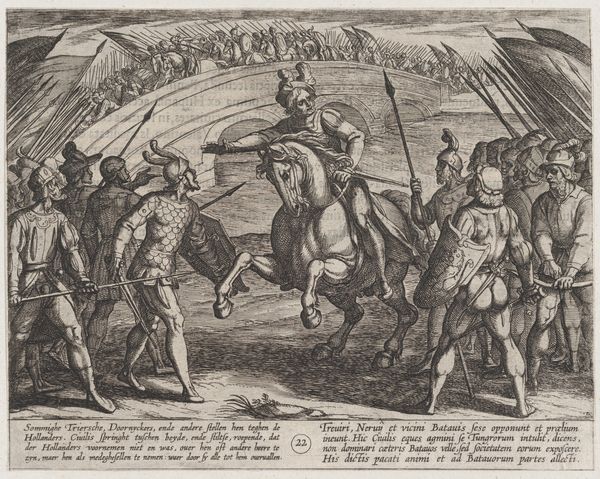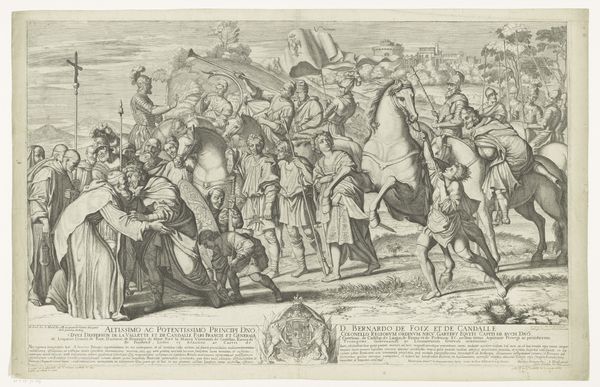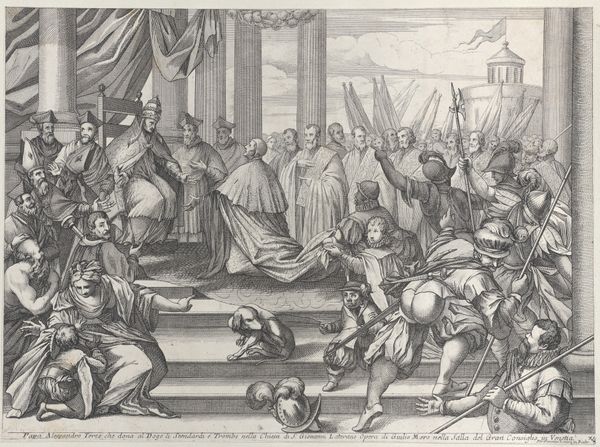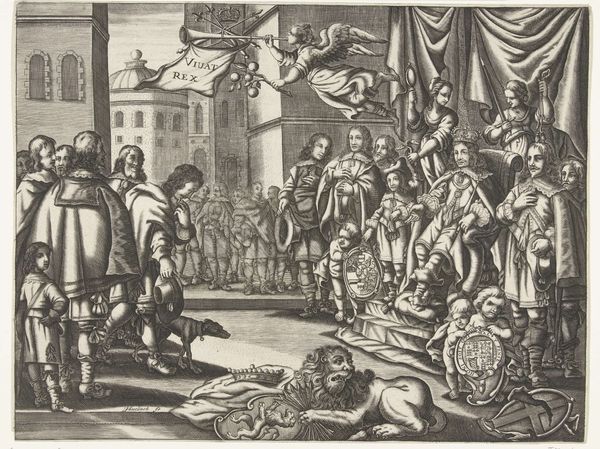
Dimensions: height 209 mm, width 277 mm
Copyright: Rijks Museum: Open Domain
Editor: This engraving, "The Martyrdom of Paul," by Hendrick Goltzius, was created between 1577 and 1582. The brutal scene, frozen in time through the intricate lines, really makes you think about the contrast between stillness and violent action. How do you interpret the formal structure and composition here? Curator: Indeed. Note how Goltzius utilizes the engraving technique to define forms and separate areas by high and low relief, achieving visual clarity and contrast through the hatching. Consider how the horizontal lines on the paving stones are juxtaposed against the verticality of the bodies. Does the picture plane strike you as dynamic or static? Editor: Dynamic, for sure. Even though it's an engraving, the composition, especially with the diagonal sword, injects so much energy. How would you say that dynamic energy plays into understanding the theme? Curator: The converging diagonals serve a dual function: they accentuate the focal point – the beheading itself – and generate visual tension. See how Goltzius deploys light and shadow to intensify the dramatic impact? The highlighted body of Paul contrasts against the shadowed figures. In which plane of the artwork is this formal contrast most evident? Editor: I see what you mean. It’s most apparent in the foreground, near the executioner. It is all incredibly calculated and effective. I now appreciate more how the artist uses compositional strategies to enhance the impact of this scene of martyrdom. Curator: Exactly, paying close attention to the interplay of formal elements deepens our understanding of its overall impact. Every stroke matters in conveying that brutality, even through such refined technique. Editor: Looking closely at those elements made the message far more clear. It moved me away from the event towards appreciating its form and structure.
Comments
No comments
Be the first to comment and join the conversation on the ultimate creative platform.
